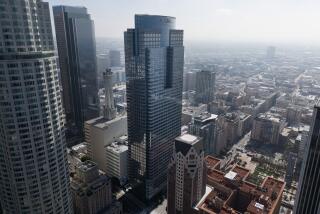Iraq’s derelict Baghdad Tower is a metaphor for a broken country
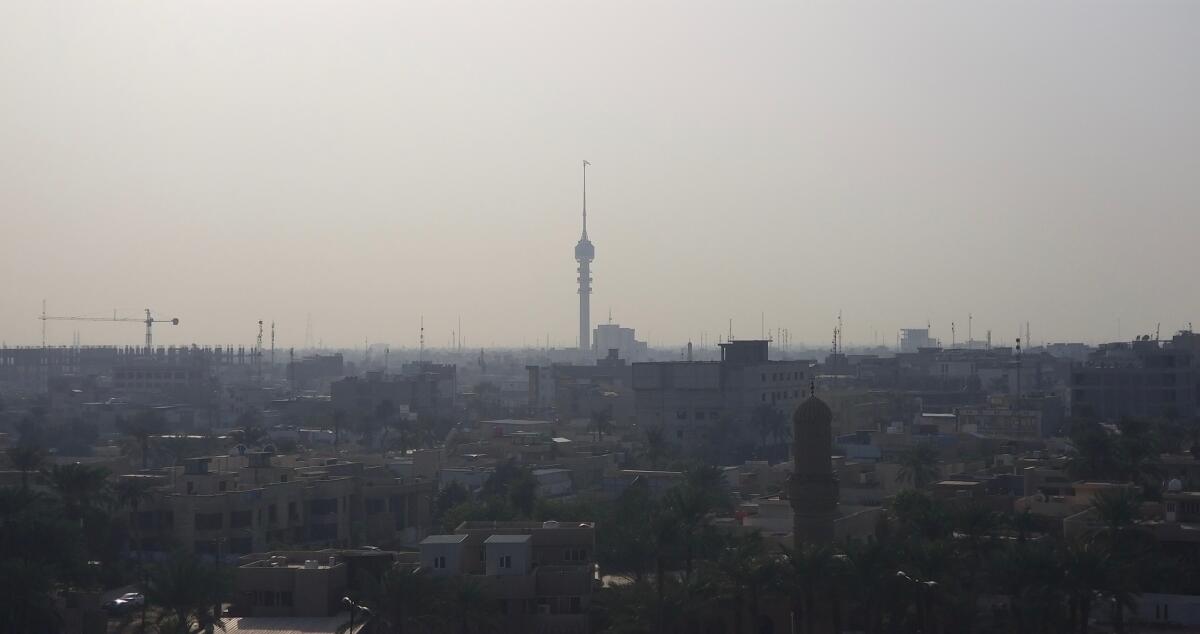
- Share via
BAGHDAD — In a city with few skyscrapers, the Baghdad Tower stands tall on the desert horizon. Ascend to one of its balconies, and on a clear day you’ll see the Ferris wheel in the Zawra amusement park and the perimeter-bound lawns of the Green Zone.
But the tower is derelict. There’s no one taking sunset selfies on those balconies. The elevator to reach the building’s 672-foot height never runs. Unlit chandeliers gather dust in a revolving rooftop restaurant that doesn’t revolve.
Instead, like the city over which it presides — once cosmopolitan, now shattered — the tower’s story suggests a forever limbo, a concrete beige monument to hubris suspended between the exigencies of war and the corruption it breeds. That’s to say nothing of the country’s newest threat: a coronavirus outbreak that has forced Iraqis into hiding.
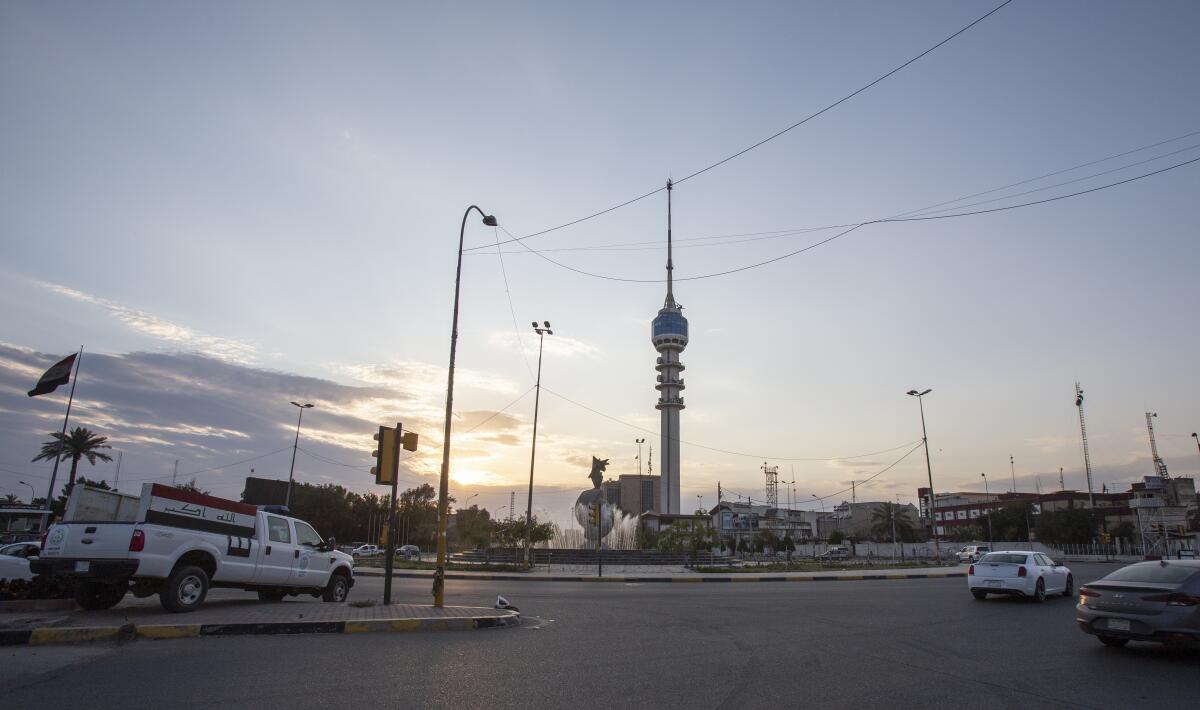
Even before the 2003 U.S.-led invasion, and well after, then-President George W. Bush and his coterie of officials — with their money and misguided blueprints — vowed they would revamp Iraq’s infrastructure and make its capital a “beacon of hope” within a year of the war ending.
Seventeen years have passed since the “shock and awe” campaign and the sectarian bloodletting that followed. Baghdad has seen the resurgence of the militant group Islamic State and its defeat; the escalating grudge match between Washington and Tehran playing out in Iraq, the anti-government protest movement raging in its streets and now the specter of the pandemic laying bare once again the Iraqi state’s failures.
Throughout it all, Baghdad, the Arab world’s second-largest capital, remains a city at war with itself, cantonized by checkpoints and the detritus of incomplete construction projects, the dream of regular running water and around-the-clock electricity more distant than its vanished grandeur.
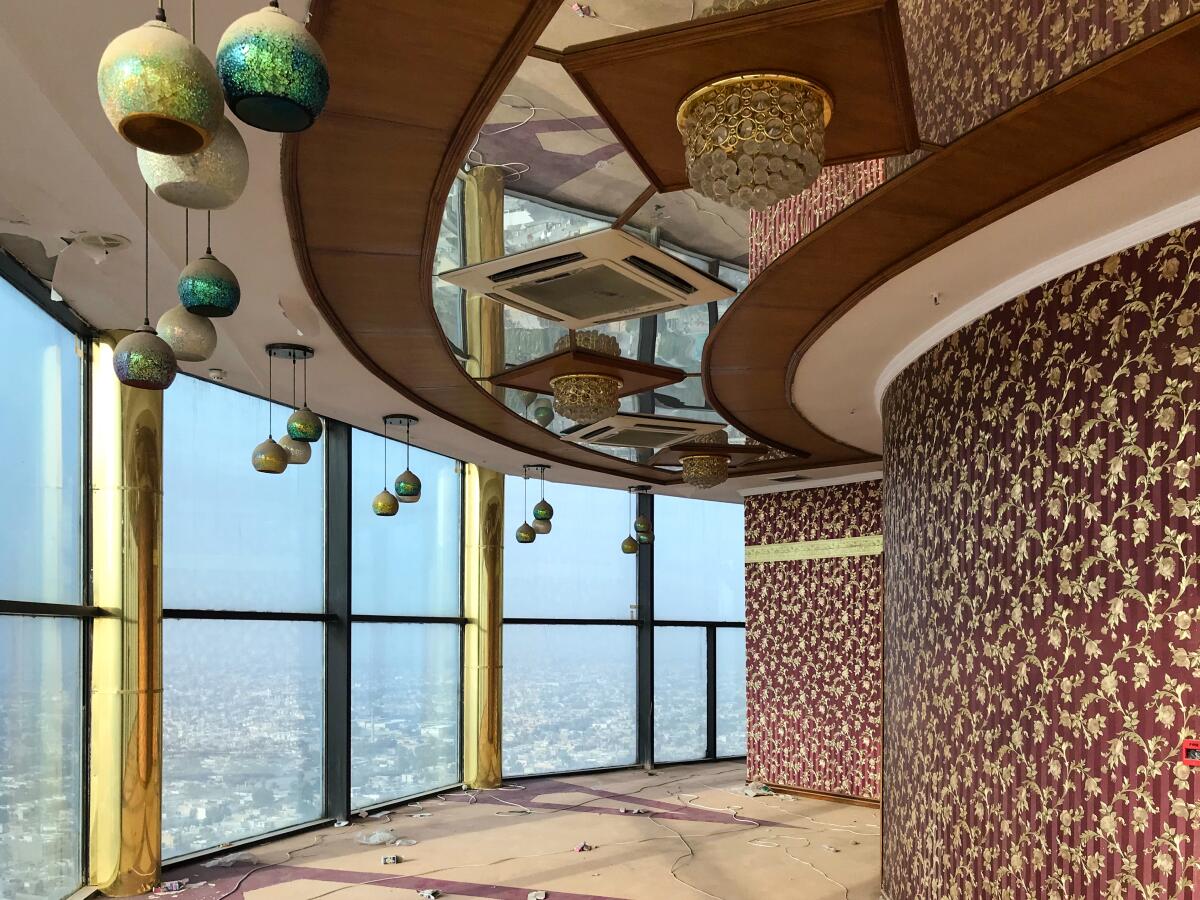
“It’s a failed city,” said Ihsan Fethi, an Iraqi architect and a former official with the Baghdad municipality. “There are hundreds of projects like the tower. Services, infrastructure: Everything is bogged down and corrupt to the core.”
Signs of that decay are omnipresent. Trash and sewage swirl and flow on many streets. Cars swerve to avoid multiplying potholes while jousting in gridlocked traffic. A cat’s cradle of jerry-built wiring delivers a few hours of power to overcrowded apartment blocks.
Corruption seems almost de rigueur, sacrificing urban planning and building codes for sectarian or party considerations.
“Before, the law was the law. It applied to you, the politician, everyone,” said one longtime Baghdad municipal official, who spoke on condition of anonymity to be able to speak freely.
“Now, if we fine anyone, they track down the municipal inspector and threaten them or their family. And nothing happens anyway, so why risk it?”
Both the official and Fethi spoke of long-abandoned projects waiting for a payoff to the right party, or politicians confiscating public land for illegal construction. The newer buildings hint at a city accustomed to chaos and of rotating power-brokers out to make a quick buck between calamities.
“People are creating facts on the ground, and the municipality has no way to catch up,” Fethi said.
“They have parties, gangs behind them. They’re just too powerful and too influential. I’m not saying it was perfect before, but people were afraid to break the law.”
You can still glimpse the charm of old Baghdad: Alleyways astride Rashid Street hide Ottoman-era buildings with grime-encrusted facades, ornate filigree coursing through the stone. Blast barriers in Baghdad’s Jewish quarter obscure a collection of elegant but crumbling two-story villas, their rusted balustrades turning rosy with the sun’s reflection off the Tigris. Monuments of figures from “One Thousand and One Nights” — Ali Baba and the Forty Thieves, a magic carpet rider — keep a forlorn vigil over a shabby metropolis where anything goes but nothing works.
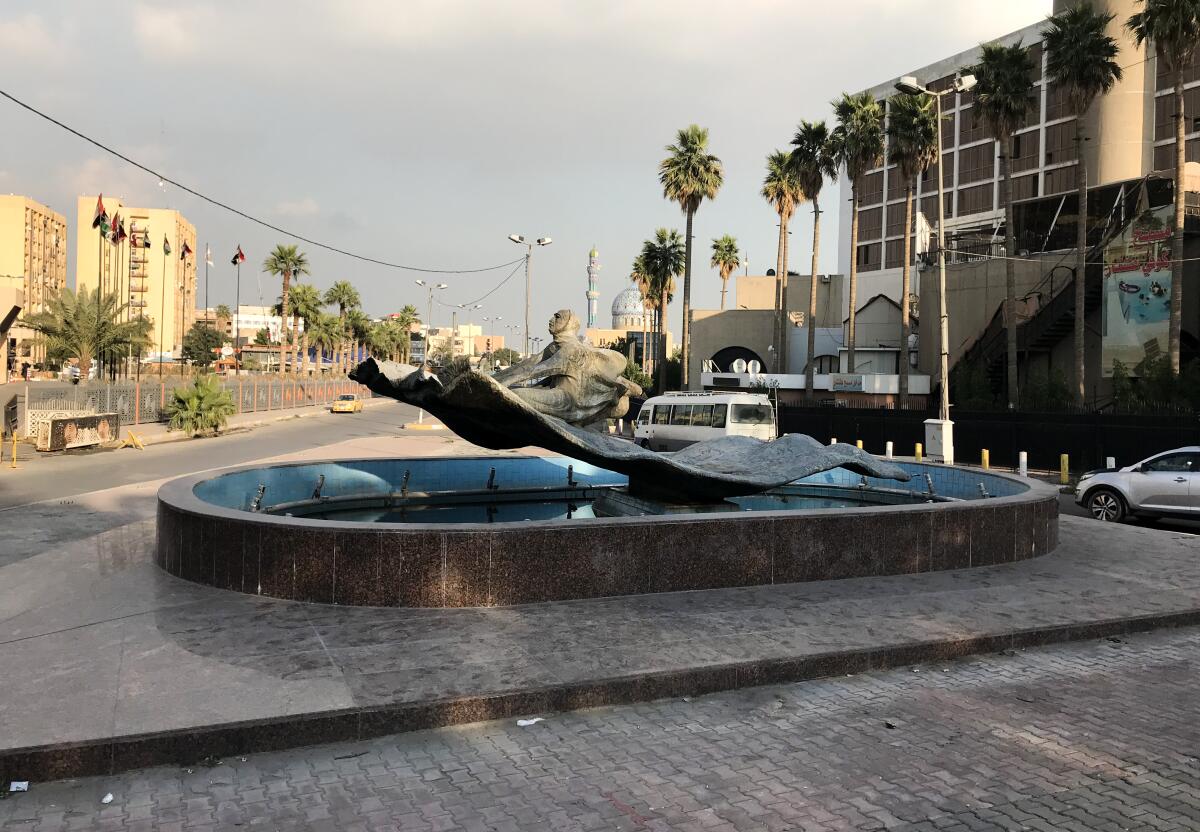
They hint at a Baghdad that was; a cultural lodestar mentioned in the same breath as Cairo, Damascus and Beirut. None of those capitals have maintained their old-world grace, where, less than a decade ago, uprisings and revolutions promised change and a chance to recapture some lost relevance before turning to war and strife. Yet it was Baghdad where the darkest of the region’s ills —whether it was sclerotic military dictatorships or the religious nihilism of Islamic State — played out.
The tower was one of the more recent additions to the city’s monuments. A project under Saddam Hussein — a dictator with a whiff of Ozymandias in his vision for Baghdad — its construction began in 1991, a year into U.N. economic sanctions that made it hard for even a broomstick to enter the country.
By 1994, the tower was ready: It resembled an inverted lawn dart piercing the Baghdad skyline, topped with observation balconies, a cafe level and two restaurants. It was named the Saddam Tower (of course).
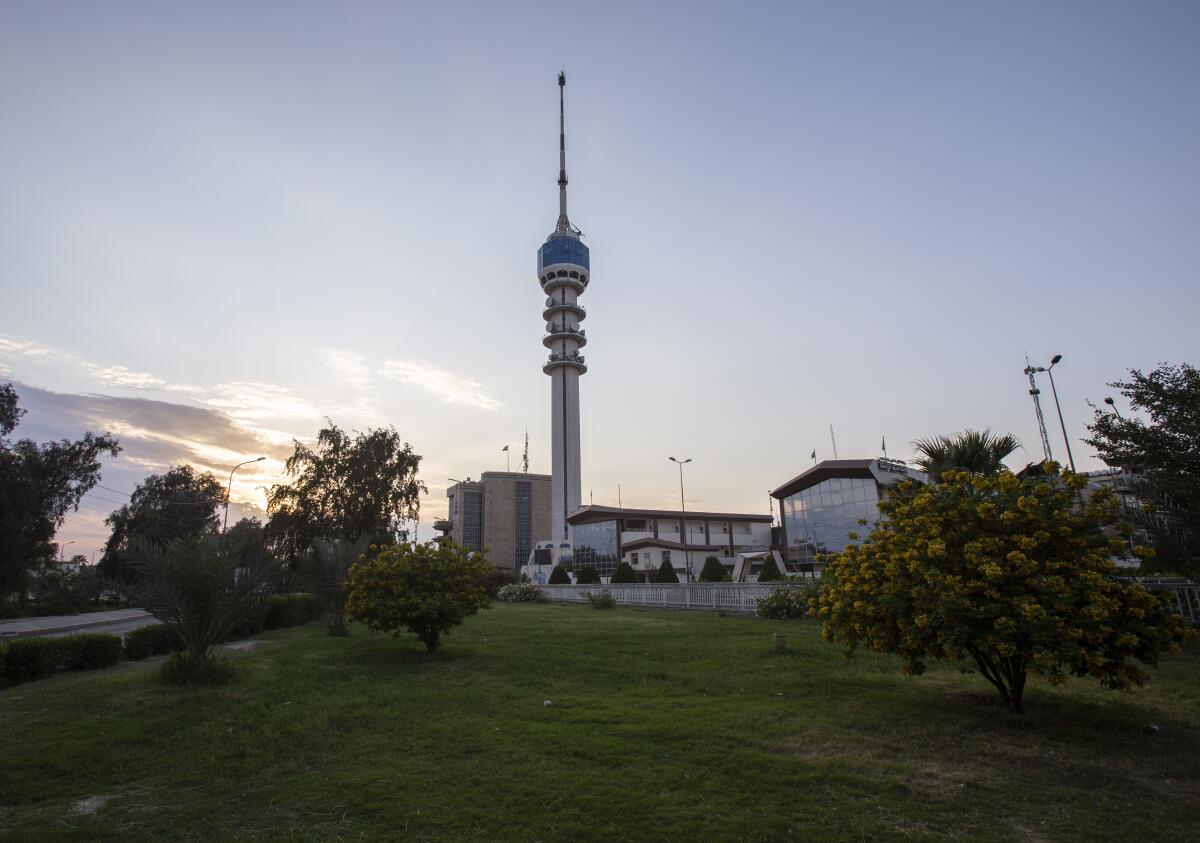
Adjacent to it was a building housing one of the capital’s main switchboards. On March 27, 2003, a week into the U.S.-led military campaign, a pair of 4,700-pound “bunker-buster” bombs leveled the telephone exchange and damaged the tower.
Since then, the tower has echoed the nation’s trajectory, trapped in a start-stop cycle of neglect punctuated by bursts of attention that lead nowhere.
It was to be the centerpiece of an urban renewal project spearheaded by Iraq’s Communications Ministry. Repairs began in 2007 and ended three years later. At the time, wrote one U.S. State Department advisor, it was the “only discernible sign of major building construction in Baghdad.”
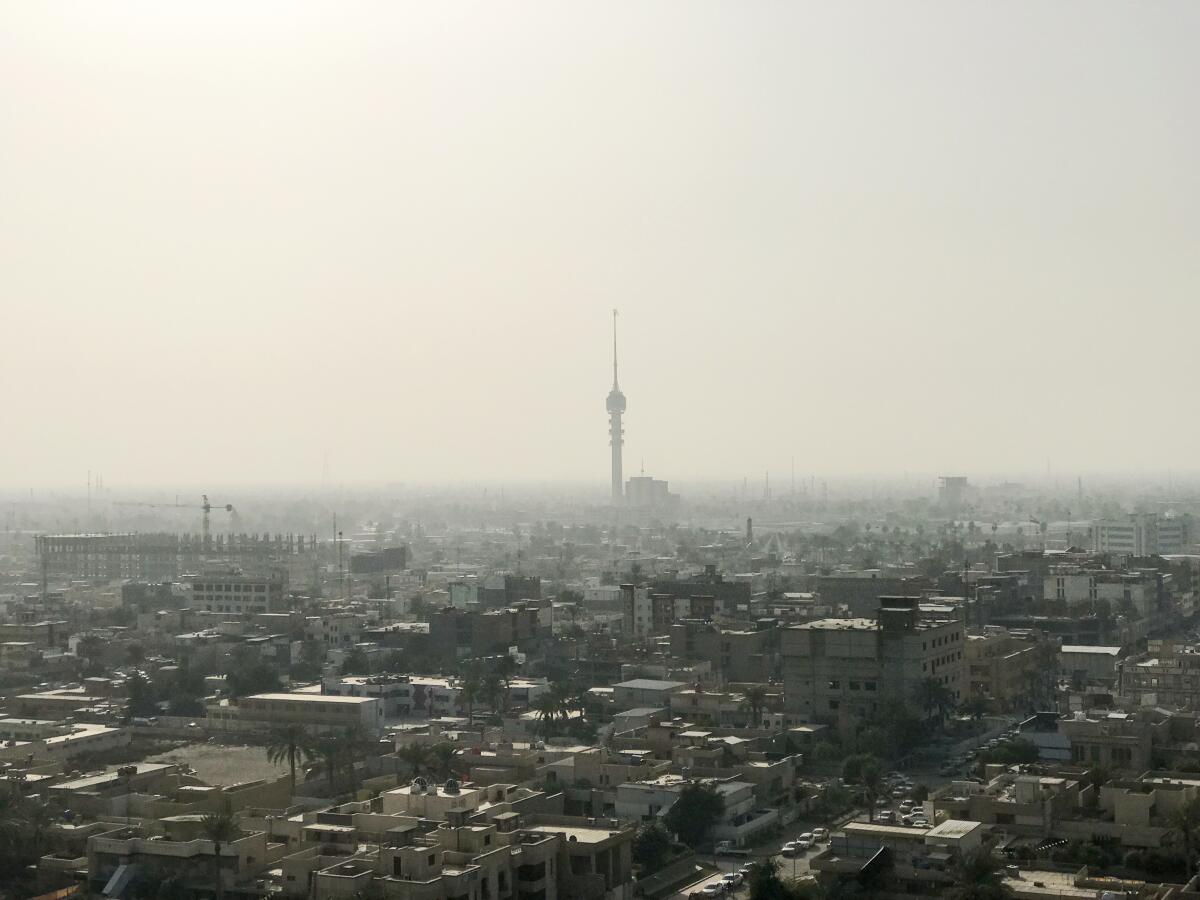
But the tower remained shuttered before a worsening security situation. In 2014, Islamic State blitzed through half the country and threatened the capital. An uptick in military spending meant there were few funds left for ministries’ investments.
The tower’s prospects improved in 2016 with a new round of refurbishment.
“We heard news that an investor had signed on; they were going to set up a ballroom, new restaurants and entertainment areas,” said Mohammad Ghani, an activist who tracks construction projects in Baghdad.
But by February 2017, he said, everything had stopped and “no one knew why.”
It was just one of many projects, Fethi said, that had languished for no clear reason.
“The airport, a metro service, highways, schools, hospitals … all of these are dead because there’s no agreement among the thieves,” he said.
Worse still, he continued, were groups that would tear down historic buildings like those on Rashid Street to make way for a mall, or that would commandeer ancient houses and rent them out as commercial spaces with little regard for their condition.
“Every day I write. I’m going crazy. But what can I do?” Fethi said. “There are parties with other priorities.”
The ministry tried to kick-start interest in the tower again at the end of 2018, and even brought Iraqi President Barham Salih for the occasion. It was a hopeful time here: Islamic State had been defeated; improving security conditions spurred authorities to remove concrete barriers (known as T-walls) and allow traffic into the Green Zone for the first time since 2003.
Those measures along with the tower’s renewal, Salih said at the 2018 New Year’s Eve celebration, “marked a new phase of interest in Baghdad and the restoration of normal life there.”
“The opening of the Baghdad Tower is a message to our people … that Baghdad will return bright, prosperous, stable and the capital of peace,” he declared.
More than a year later, stability — let alone prosperity — is still missing in Baghdad as well as postwar Iraq, a country with no full-blown conflict but where the threat of one is almost routine, as common as forecasts of bad weather blowing in from the desert.
When anti-government protests began in October, the T-walls were brought back; the Green Zone, the state’s seat of power, was blocked off once more. It is April and the tower still hasn’t opened.
“I keep asking why, but I never get an answer. The ministry stopped talking to me,” Ghani said.
“We just don’t know if this government is serving the country or working against it. It’s almost as if everything that is beautiful they have to keep closed.”
More to Read
Sign up for Essential California
The most important California stories and recommendations in your inbox every morning.
You may occasionally receive promotional content from the Los Angeles Times.

